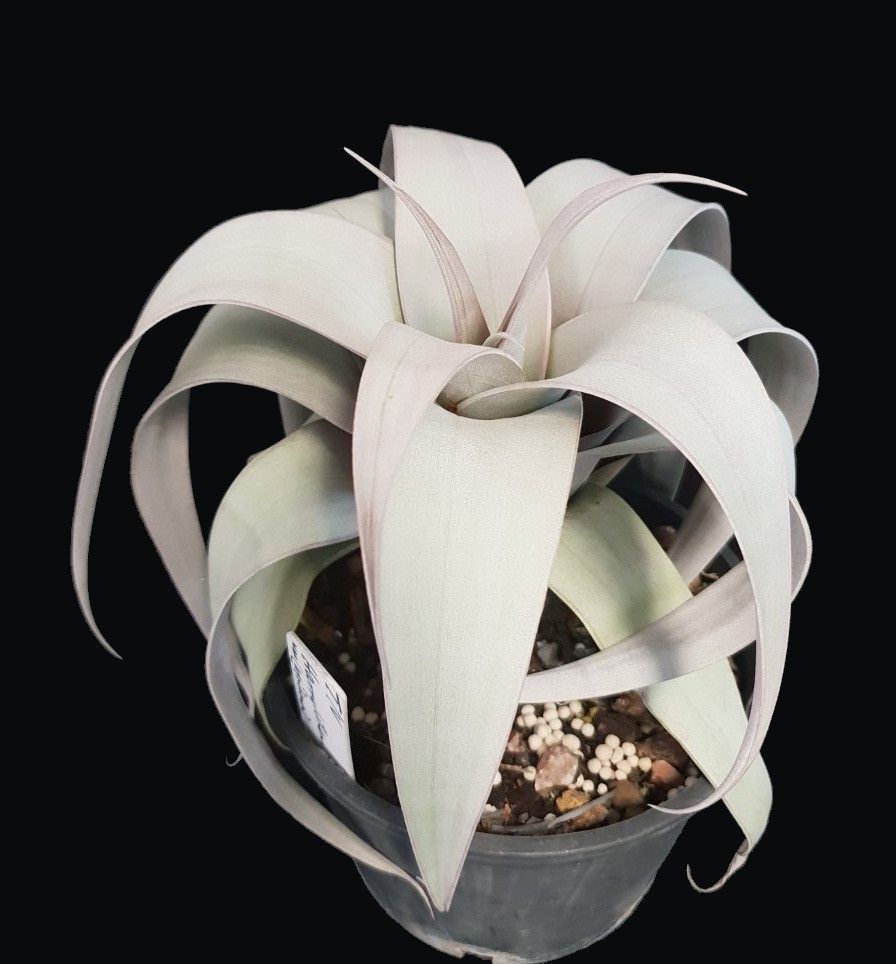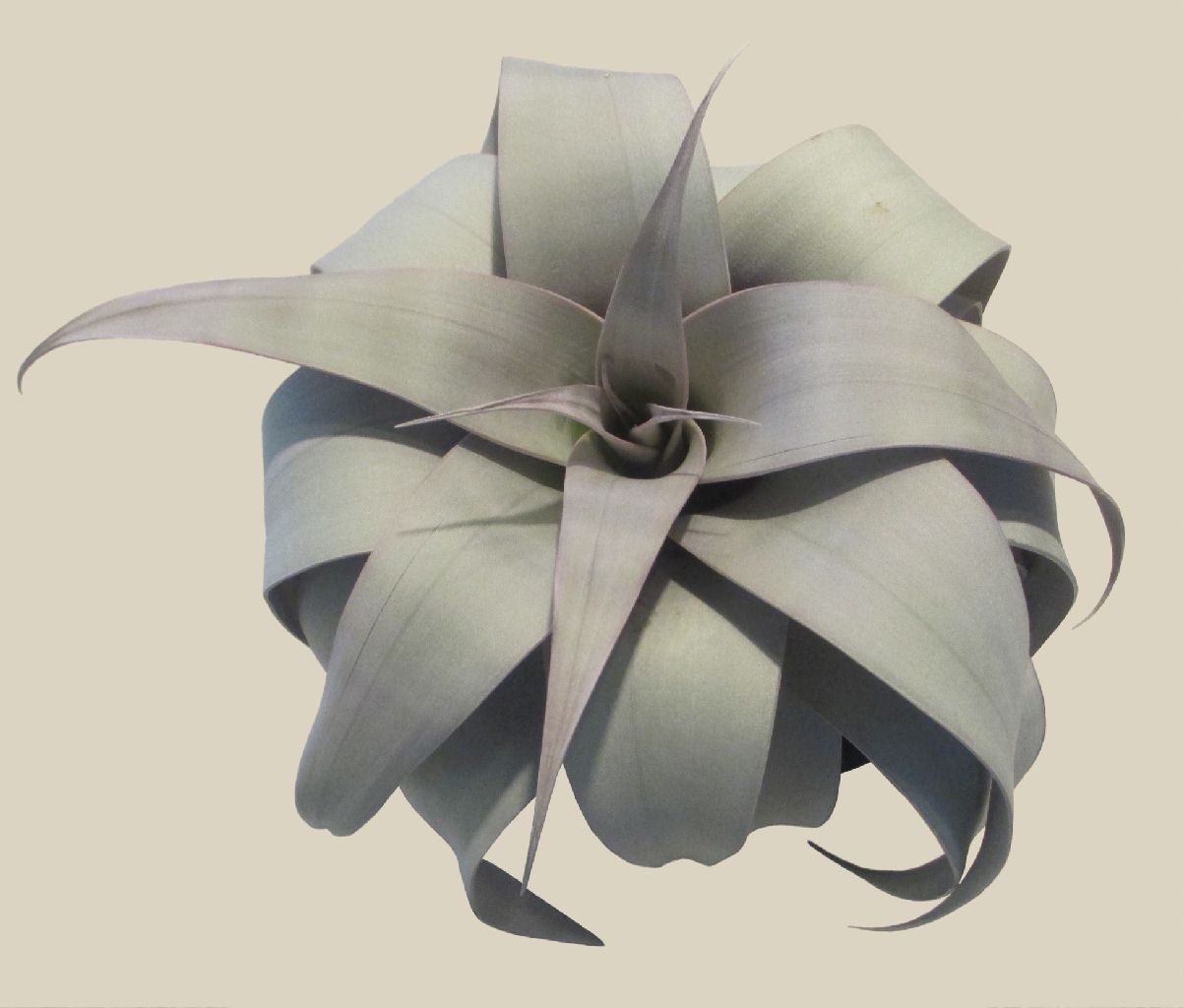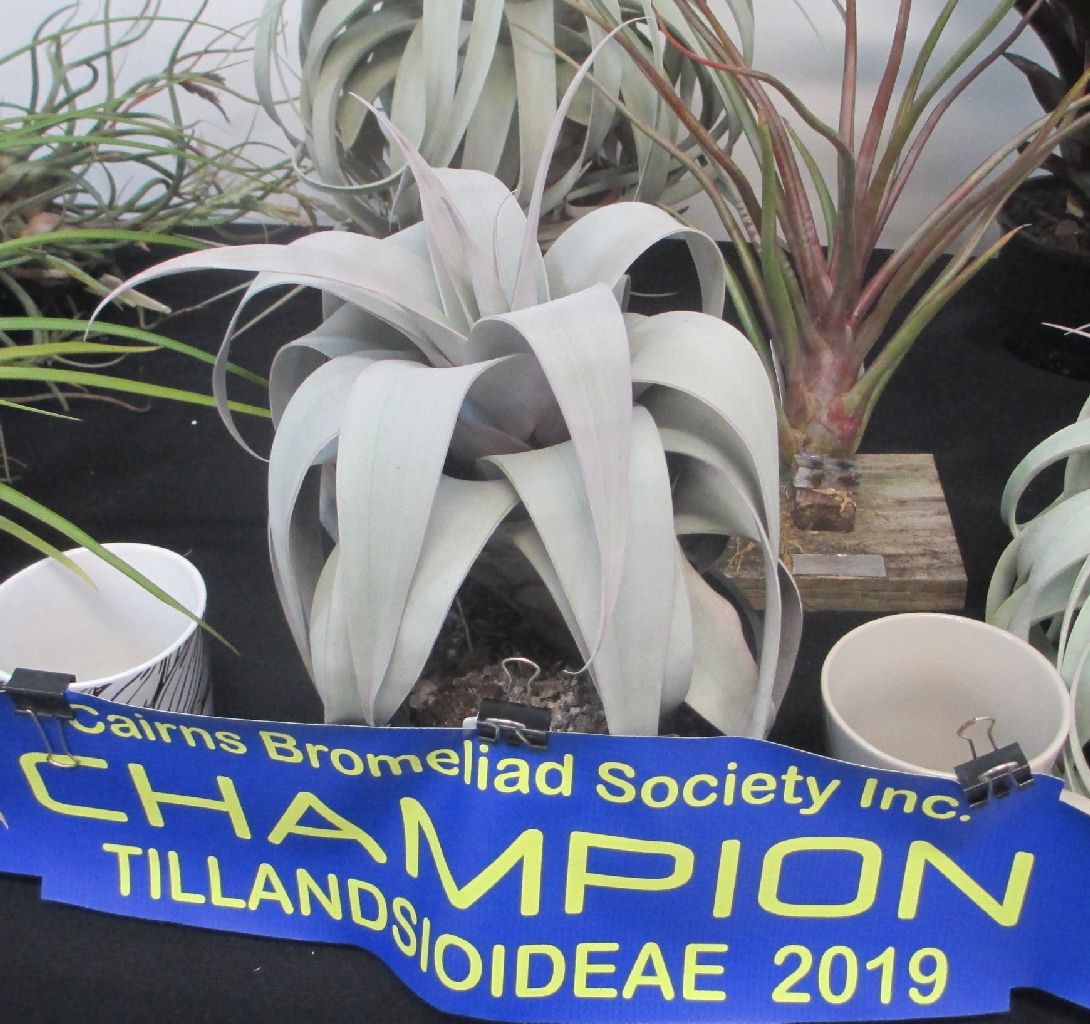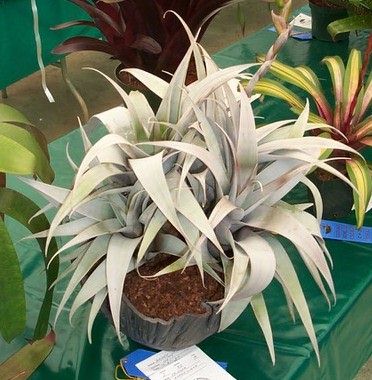



Basionym:—Vriesea harrylutheri Leme & G.K. Br., Vidalia 2(1): 4, figs. 1a–d, 2 (2004), {X Type:—Oliveira s.n. (holo HB!) X} Brazil: Prov. Espírito santo, Serra, near BR 101. Apr. 1998. Oliveira, R. de in E. Leme 4084 (HB)
Vriesea harrylutheri Leme & G. Brown, Vidalia 2(1):4-6. 2004
Type: Espirito Santo State, Serra, near BR 101, fl. cult. Apr. 1998, E. Leme 4084 (holotype, HB).
A V. appariciana Pereira & Reitz, cui affinis, laminis foliorum latioribus et longioribus, manifeste albo-lepidotis, per anthesim reflexis, inflorescentia distincte longiora, floribus ca. 18, majoribus, per anthesim laxioribus differt.
PLANT lacking rhizomes, flowering ca. 80 cm tall.
LEAVES 18 to 20, rosulate, thickly coriaceous, forming at base a broad funnelform rosette.
SHEATHS broadly elliptic, suberect, ca. 14 x 8.5 cm, very densely pale brown-lepidote, slightly castaneous.
BLADES narrowly triangular, acuminate, flat toward base and strongly reflexed at anthesis mainly the basal ones, ca. 40 cm long, ca. 6.5 cm wide at base, silvery-white on both sides due to green color completely obscured by a very dense layer of white trichomes, finely nerved abaxially, margins distinctly truncate, ca. 2 mm thick.
SCAPE suberect, ca. 45 cm long, ca. 1 cm in diameter, green, glabrous, strongly sulcate when dry.
SCAPE BRACTS the basal ones foliaceous, the upper ones broadly ovate, acuminate, 3-4.5 x 2-3 cm, erect, equaling to exceeding the internodes, imbricate, densely white-lepidote outside and toward apex, the upper ones distinctly nerved to sulcate at anthesis, greenish toward base, purplish near the apex, lustrous.
INFLORESCENCE simple, suberect, sublinear, 35 x 3.5-4 cm, distichously ca. 18-flowered, apex forming a crest of floral bracts early before anthesis.
RACHIS ca. 8 mm in diameter, stout, flexuous, green, glabrous, strongly sulcate when dry.
FLORAL BRACTS broadly ovate, acute and bearing a distinct, incurved apiculus, ca. 40 x 35 mm, white-lepidote mainly toward apex, obtusely carinate, imbricate and divergently arranged before anthesis, secund with the flowers at anthesis, coriaceous, greenish to dark purplish-green, lustrous, very strongly sulcate at anthesis, corrugate near the apex, without conspicuous decurrent auricles at base, about equaling at least 2/3 of the sepals length, the apical ones not imbricate toward their apex and forming a narrow crest early before anthesis.
FLOWERS ca. 45 mm long, anthesis nocturnal, producing an odor somewhat related to garlic, very densely arranged and divergent-erect before anthesis, subdensely arranged and distinctly secund at anthesis, pedicel 10 mm long, stout.
SEPALS suboblong to ovate, rounded, 28 x 14-15 mm, dark green, inconspicuously lepidote inside to glabrous, ecarinate, thickly coriaceous near the base.
PETALS obovate, apex broadly emarginate, spreading at anthesis, ca. 40 x 20 mm, pale yellowish-green, bearing at base 2 subobovate, irregularly long dentate to acuminate, 12-13 x 3 mm appendages basally adnate to the petals for ca. 6 mm, corolla ca. 27 mm in diameter.
STAMENS disposed in two rows with three of them on each lateral side of the corolla at anthesis.
FILAMENTS free, ca. 25 x 1.5 mm.
ANTHERS ca. 7 mm long, dorsifixed near the base, base sagittate, apex obtuse.
STIGMA tubolaciniate, distinctly crenulate-laciniate on the margins, ca. 2 mm in diameter, green.
OVULES apiculate to shortly caudate.
Paratype: Canais s. n. legit, fl. cult. R. Menescal s. n. (HB).
This new ornamental species honors the worldwide Bromeliaceae specialist, Harry E. Luther, director of the Mulford B. Foster Bromeliad identification Center of the Marie Selby Botanical Garden, Sarasota, Florida, USA, who has supported over the years most of our taxonomical studies.
Vriesea harrylutheri was introduced in cultivation about 15 years ago. Since then, this species has been misnamed as V. appariciana, to which it is very close related and forming a subcomplex of species distinguished by discrete and consistent morphological characters. In its general aspect, V. harrylutheri differs from the closer relatives by larger plants with broader leaves (6.5 cm vs. 3.5-4.5 cm wide at base) that are distinctly silvery-white coloured (vs. grayish-green), and by the leaf-blades, especially the basal ones being strongly reflexed at anthesis. Also, the longer inflorescence of this new species (35 cm vs. 12-17 cm long) has apical floral bracts with distal portions that are not imbricate (vs. completely imbricate) that form a crest prior to anthesis, and have a higher average number of flowers (18 vs. 10-16).
This new species is only known from the type locality in the county of Serra, Espirito Santo State where its grows side by side with V. plurifolia Leme, forming dense populations on vertical, bare escarpments at about 200 m elevation.